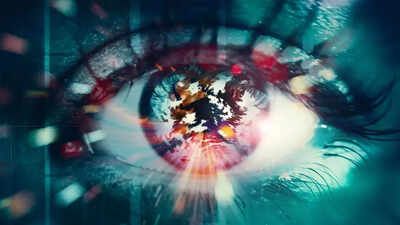Have you ever paused to consider whether your perception of the present is truly real-time? A groundbreaking study published in Science Advances in 2022 suggests that our awareness of the present may be an illusion. Researchers propose that our brains present us with a visual representation that is, in fact, up to 15 seconds old. This intriguing phenomenon, highlighted by Popular Mechanics and UNILAD Tech, indicates that our brains merge past visual information to construct a stable and coherent view of reality. Essentially, what we perceive as "now" is a carefully curated version of the past, assembled by our brains.

Scientists have discovered that the human brain doesn't process visual information instantaneously. Instead, it employs a delay, blending images from the recent past to generate a stable and seamless perception of our surroundings. This effect has been termed a "previously unknown visual illusion", acting as a buffer against the overwhelming and chaotic nature of moment-to-moment perception.
This delay isn't a flaw but rather a crucial survival mechanism, enabling us to manage the constant influx of sensory data in a dynamic environment. Consider the rapid changes in our surroundings – blinking lights, moving objects, shifting shadows, or even our own eye movements. Processing each of these changes in real-time would simply overload our cognitive capacity.
To prevent this sensory overload, the brain utilizes a process known as serial dependence. This involves blending our current visual input with what we perceived moments ago. The result is visual smoothing, creating the illusion of a calm, unchanging scene. In essence, our brains prioritize stability over absolute precision, favoring peace of mind.
The study indicates that our brains rely on visual snapshots from as far back as 15 seconds. This implies that what we perceive as the "present moment" is actually an edited replay of past visual information.
This delay aids us in navigating a constantly changing world by preventing cognitive overload. It functions as a form of biological buffering – our brain constantly edits a video, replaying the last few seconds to ensure continuity. Rather than being a malfunction, this feature offers significant evolutionary advantages. By emphasizing consistency over hyper-accurate, real-time feedback, the brain empowers us to:
In our fast-paced world, this smoothing effect prevents us from being overwhelmed by every minor change in our surroundings.
This discovery challenges a core concept in mindfulness and philosophy: the idea of being fully present. If our visual perception is rooted in the past, then the "now" we experience isn't truly present but rather a curated experience shaped by our brain's memory and interpretations.
This raises thought-provoking questions:
Ultimately, we are seeing a version of the past, subtly manipulated by our brains to create a sense of seamless continuity.
Newer articles
 Black Caps Announce Packed 2025-26 Home Schedule Featuring Australia, England, West Indies & South Africa
Black Caps Announce Packed 2025-26 Home Schedule Featuring Australia, England, West Indies & South Africa
 Jaiswal Aims to Eclipse Gavaskar's 49-Year-Old Record as India Seeks Series Leveler at Edgbaston
Jaiswal Aims to Eclipse Gavaskar's 49-Year-Old Record as India Seeks Series Leveler at Edgbaston
 Rishabh Pant: Greg Chappell Lauds Indian Star's Game-Changing Cricket Revolution
Rishabh Pant: Greg Chappell Lauds Indian Star's Game-Changing Cricket Revolution
 Samsung Unveils Galaxy A35 5G and A55 5G Pricing, Specs, and Availability
Samsung Unveils Galaxy A35 5G and A55 5G Pricing, Specs, and Availability
 5 Silent Signals: Spotting Prediabetes Without a Blood Test
5 Silent Signals: Spotting Prediabetes Without a Blood Test
 Cummins Lauds Australia's Solid Start in New World Test Championship Campaign
Cummins Lauds Australia's Solid Start in New World Test Championship Campaign
 Science-Backed Strategies: 5 Simple Habits for a Healthier Heart
Science-Backed Strategies: 5 Simple Habits for a Healthier Heart
 The subtext of Gill's selection
The subtext of Gill's selection
 Anish Giri's Jesting Remark Highlights Praggnanandhaa's Rise to Top Junior Chess Ranking
Anish Giri's Jesting Remark Highlights Praggnanandhaa's Rise to Top Junior Chess Ranking
 India vs England: Calls Mount for Kuldeep Yadav's Inclusion in Edgbaston Test Amid Strategic Reworking
India vs England: Calls Mount for Kuldeep Yadav's Inclusion in Edgbaston Test Amid Strategic Reworking